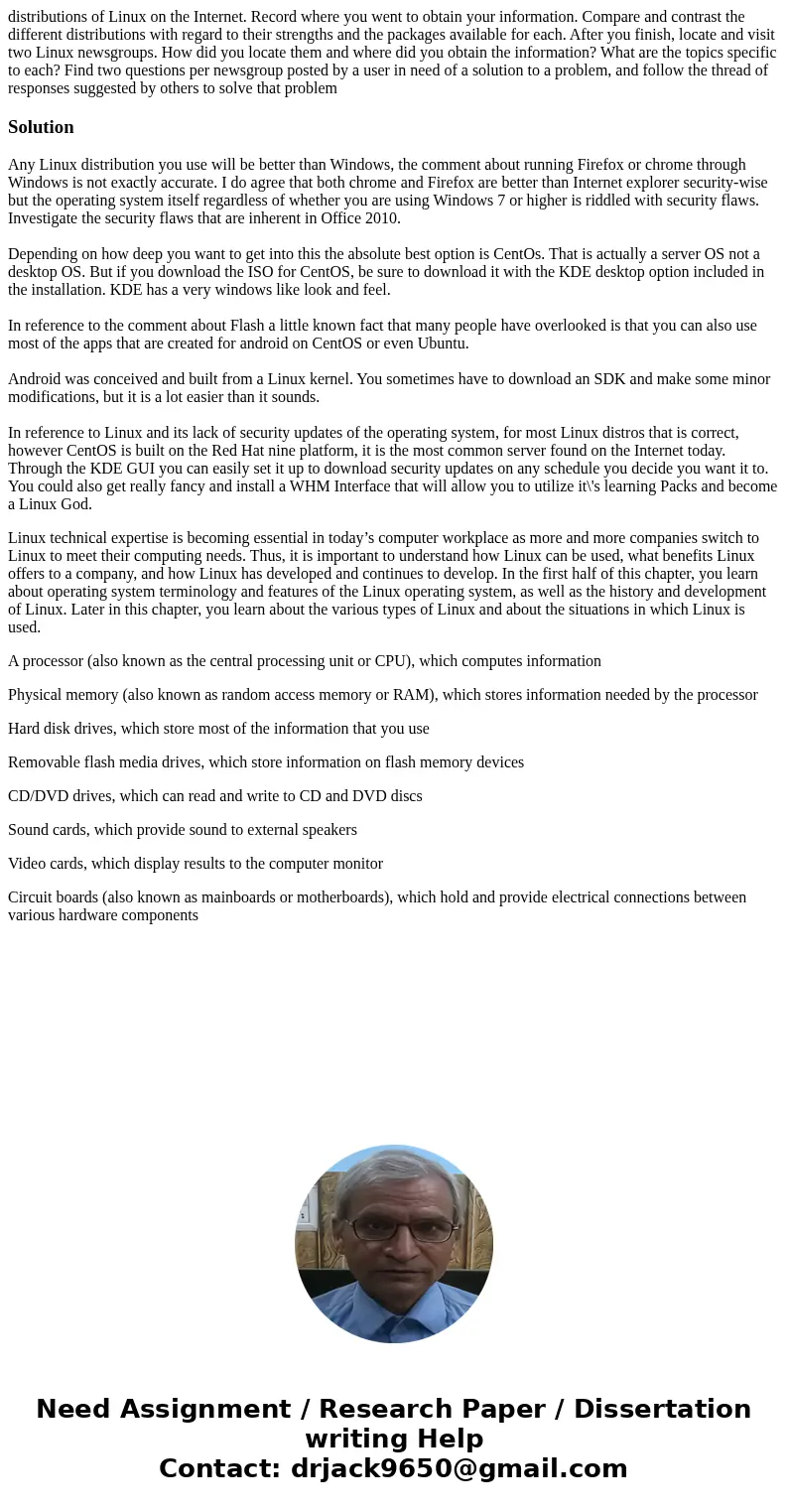distributions of Linux on the Internet Record where you went
distributions of Linux on the Internet. Record where you went to obtain your information. Compare and contrast the different distributions with regard to their strengths and the packages available for each. After you finish, locate and visit two Linux newsgroups. How did you locate them and where did you obtain the information? What are the topics specific to each? Find two questions per newsgroup posted by a user in need of a solution to a problem, and follow the thread of responses suggested by others to solve that problem
Solution
Any Linux distribution you use will be better than Windows, the comment about running Firefox or chrome through Windows is not exactly accurate. I do agree that both chrome and Firefox are better than Internet explorer security-wise but the operating system itself regardless of whether you are using Windows 7 or higher is riddled with security flaws. Investigate the security flaws that are inherent in Office 2010.
Depending on how deep you want to get into this the absolute best option is CentOs. That is actually a server OS not a desktop OS. But if you download the ISO for CentOS, be sure to download it with the KDE desktop option included in the installation. KDE has a very windows like look and feel.
In reference to the comment about Flash a little known fact that many people have overlooked is that you can also use most of the apps that are created for android on CentOS or even Ubuntu.
Android was conceived and built from a Linux kernel. You sometimes have to download an SDK and make some minor modifications, but it is a lot easier than it sounds.
In reference to Linux and its lack of security updates of the operating system, for most Linux distros that is correct, however CentOS is built on the Red Hat nine platform, it is the most common server found on the Internet today. Through the KDE GUI you can easily set it up to download security updates on any schedule you decide you want it to. You could also get really fancy and install a WHM Interface that will allow you to utilize it\'s learning Packs and become a Linux God.
Linux technical expertise is becoming essential in today’s computer workplace as more and more companies switch to Linux to meet their computing needs. Thus, it is important to understand how Linux can be used, what benefits Linux offers to a company, and how Linux has developed and continues to develop. In the first half of this chapter, you learn about operating system terminology and features of the Linux operating system, as well as the history and development of Linux. Later in this chapter, you learn about the various types of Linux and about the situations in which Linux is used.
A processor (also known as the central processing unit or CPU), which computes information
Physical memory (also known as random access memory or RAM), which stores information needed by the processor
Hard disk drives, which store most of the information that you use
Removable flash media drives, which store information on flash memory devices
CD/DVD drives, which can read and write to CD and DVD discs
Sound cards, which provide sound to external speakers
Video cards, which display results to the computer monitor
Circuit boards (also known as mainboards or motherboards), which hold and provide electrical connections between various hardware components

 Homework Sourse
Homework Sourse